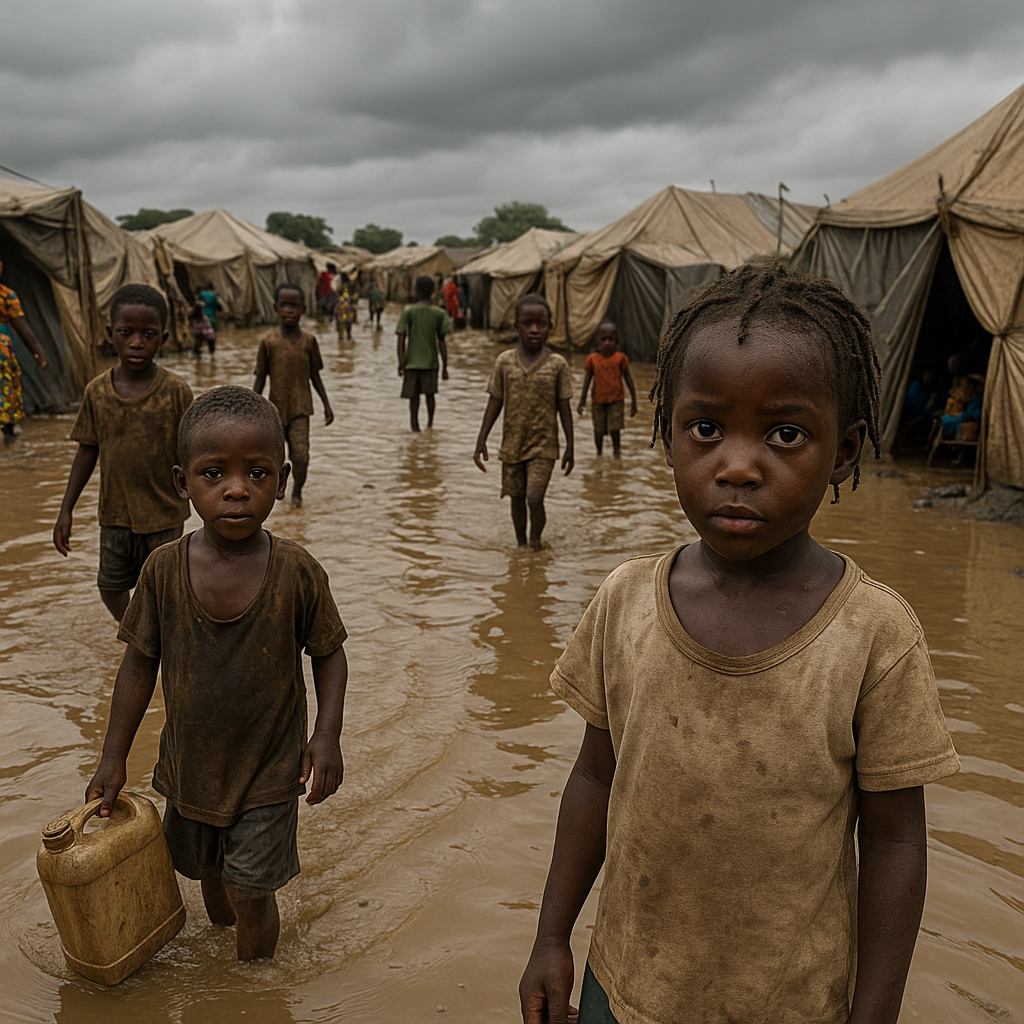80,000 Children at High Risk as Cholera Threatens West and Central Africa
The spread of the disease, exacerbated by floods, displacement, and fragile healthcare systems, demands immediate international action to prevent widespread fatalities—particularly among children under five.

- Country:
- Senegal
As the rainy season intensifies across West and Central Africa, health authorities and humanitarian organizations are raising alarms over a rapidly worsening cholera crisis. An estimated 80,000 children are at high risk of infection, with outbreaks already active in nine countries and several others under close surveillance. The spread of the disease, exacerbated by floods, displacement, and fragile healthcare systems, demands immediate international action to prevent widespread fatalities—particularly among children under five.
The Democratic Republic of the Congo (DRC) and Nigeria, the two most heavily affected countries, are driving cross-border transmission risks that threaten neighboring nations, including Chad, Côte d’Ivoire, Ghana, Togo, and the Republic of Congo, where active outbreaks persist. Niger, Liberia, Benin, the Central African Republic, and Cameroon remain on high alert due to their environmental and health vulnerabilities.
DRC Faces Worst Cholera Surge Since 2017
In the DRC, the Ministry of Health has reported over 38,000 cases and 951 deaths in July alone, with children under five representing 25.6% of all cases. The most severely impacted provinces include South Kivu, North Kivu, Haut Katanga, Tshopo, Haut Lomami, Tanganyika, and Maniema.
In Kinshasa, cholera cases have surged alarmingly following heavy rains and widespread urban flooding. With medical services already stretched thin, the city is now grappling with an unprecedented spike in mortality, with a case fatality rate of 8%—well above the emergency threshold.
“This may become the worst cholera outbreak in the DRC since 2017 unless rapid containment measures are implemented,” warned Gilles Fagninou, UNICEF Regional Director for West and Central Africa.
Outbreaks in Chad, Nigeria, Ghana, and Beyond
In Chad, the outbreak has begun to impact refugee populations in precarious border zones. The Dougui refugee site, 103 kilometers from Abéché near the Sudanese border, has reported 55 suspected cases and four deaths. Lab testing confirmed the presence of Vibrio cholerae in samples collected on July 24.
Most of the displaced are children and women living in overcrowded and unsanitary conditions, which significantly increase the risk of transmission. Access to clean water, sanitation, and medical care is extremely limited.
In Nigeria, authorities have recorded 3,109 suspected cases and 86 deaths across 34 states as of the end of June. Cholera remains endemic, and recurrent annual outbreaks continue to plague the country’s public health infrastructure.
-
Ghana: 612 cases (as of April 28, 2025)
-
Côte d’Ivoire: 322 cases and 15 deaths (as of July 14, 2025)
-
Togo: 209 cases and 5 deaths (as of June 22, 2025)
UNICEF Leads Emergency Response, But Funding Falls Short
Since the beginning of the outbreak, UNICEF has mobilized emergency health, WASH (Water, Sanitation, and Hygiene), and cholera vaccination campaigns across the affected countries. The organization is also working to educate families on hygiene practices, deploy emergency supplies, and build treatment centers in both urban and remote areas.
To intensify and expand these efforts across the region over the next three months, UNICEF urgently requires $20 million. These funds will be directed toward:
-
Distribution of lifesaving health and WASH supplies
-
Cholera vaccination campaigns
-
Community outreach and risk communication
-
Strengthening of surveillance and early warning systems
“We are in a race against time,” said Fagninou. “We’re working hand in hand with national authorities to deliver essential healthcare, safe water, and proper nutrition to children who are already vulnerable to severe acute malnutrition and waterborne diseases.”
A Regional Crisis with Cross-Border Implications
The cross-border nature of cholera transmission, especially in areas with high population movement such as refugee corridors and trade routes, poses a regional security and health challenge. The current conditions—marked by prolonged flooding, population displacement, poor infrastructure, and limited healthcare capacity—are creating a perfect storm for cholera to spiral out of control.
Unless international donors, governments, and humanitarian agencies act urgently and collectively, the epidemic could expand into one of the most devastating in the region’s recent history, especially affecting children under five, who are most vulnerable to dehydration and death.
Call to Action: No Child Left Behind
As health systems buckle and the rainy season intensifies, millions of children remain at risk of contracting and dying from preventable diseases like cholera. UNICEF and its partners are urgently calling on the international community to step up support, not just in financial terms, but through logistics, technical assistance, and cross-border coordination.
“This is a matter of survival,” said Fagninou. “Together with an array of partners, we are strengthening community engagement and extending our reach to remote and underserved areas, making every effort to ensure that no child is left behind.”
ALSO READ
Olha Stefanishyna: Ukraine's New Diplomatic Bridge to Washington
Global Refugee Crisis Worsens as UNHCR Faces Severe Funding Cuts
High-Stakes Tariff Talks: Japan's Ryosei Akazawa Heads to Washington
High-Stakes Tariff Talks: South Korean Security Adviser Heads to Washington
Tanker Truck Spill Threatens Salmon Habitat in Washington's Olympic Peninsula










